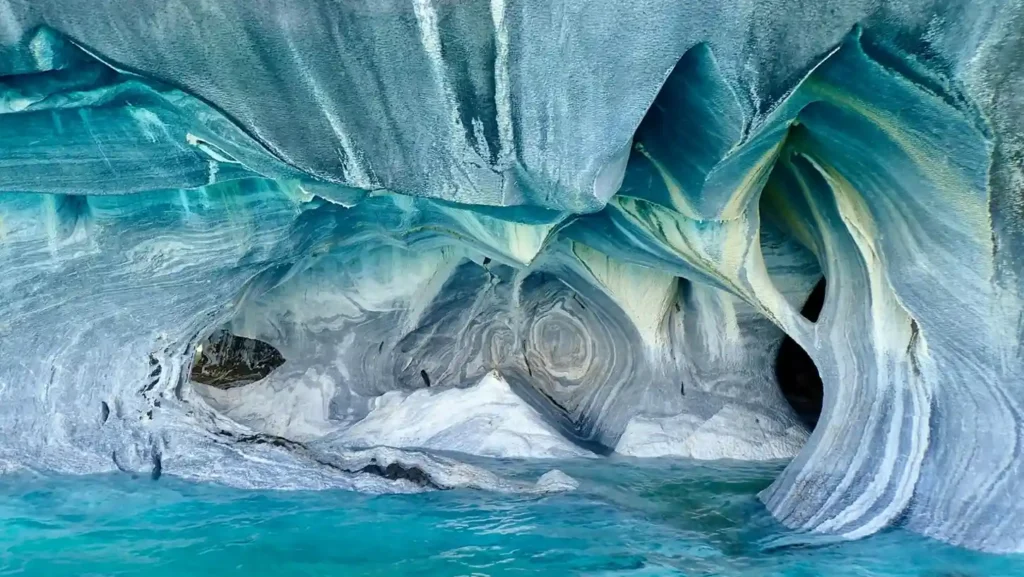Nature has always been the greatest artist on our planet, occasionally creating formations so bizarre they seem otherworldly. These natural wonders stand as testament to the incredible forces that have shaped our planet over millions of years. From stone columns that look mathematically designed to lakes that turn animals to stone, these places challenge our understanding of the natural world.
1. Nature’s Geometric Puzzle: ‘Giant’s Causeway’

Geological Masterpiece
Located on the northeast coast of Northern Ireland, the Giant’s Causeway features roughly 40,000 interlocking basalt columns, most forming perfect hexagons that fit together like a giant puzzle. This UNESCO World Heritage site stretches along the coastline, creating what appears to be an ancient cobblestone road leading into the sea.
How It Formed
This strange landscape emerged about 60 million years ago when intense volcanic activity forced molten basalt through chalk beds. As the lava cooled rapidly, it contracted and fractured in a specific way that created these remarkably uniform columns. The phenomenon, called columnar jointing, demonstrates how nature sometimes follows mathematical principles without human intervention.
Local Legend
While geologists have their scientific explanation, local folklore tells a more entertaining story. According to legend, the causeway was built by Irish giant Finn MacCool as a pathway to Scotland to fight his Scottish rival. When seeing how enormous his opponent was, Finn disguised himself as a baby. The Scottish giant fled back to Scotland, destroying the causeway behind him, leaving only the sections visible today.
2. Death’s Colorful Canvas: ‘Lake Natron’
Nature’s Deadliest Water
In northern Tanzania lies one of the world’s most hostile environments—Lake Natron, a blood-red body of water that reaches temperatures up to 140°F (60°C) and has a pH level between 9 and 10.5, nearly as alkaline as ammonia. Despite these extreme conditions, flamingos thrive here, feeding on the algae that gives the lake its distinctive crimson hue.
Petrifying Properties
What makes Lake Natron truly unique is its ability to calcify animals that die in its waters. The lake’s high sodium carbonate content creates a natural preservation process, essentially “turning to stone” any unfortunate creatures that perish there. Wildlife photographer Nick Brandt captured this phenomenon in his haunting series of calcified animals positioned as they might have been in life.
Survival Against Odds
Surprisingly, this seemingly deadly environment serves as the primary breeding ground for 2.5 million lesser flamingos. The lake’s extreme conditions actually protect the flamingo eggs and chicks from predators that cannot survive the harsh environment, creating a perfect, if bizarre, nursery.
3. A Marble Masterpiece: ‘The Marble Caves’

Hidden Water Palace
Nestled on the shores of General Carrera Lake in Patagonia, Chile, the Marble Caves (Cuevas de Mármol) represent one of nature’s most beautiful sculptural achievements. These smooth, swirling caverns display hypnotic blue patterns as sunlight reflects off the turquoise waters onto the polished marble walls.
Patient Artistry
These caves weren’t created overnight—they represent over 6,000 years of patient water erosion. The constant lapping of waves against calcium carbonate has slowly carved out these chambers, polishing the stone to a smooth finish that reveals gorgeous blue, green, and gray marbled patterns.
Changing Canvas
Part of what makes the Marble Caves so spectacular is their ever-changing appearance. The colors within the caves shift throughout the year based on water levels and seasonal light. Visit in early summer for deep blue hues or in early spring when the water takes on a lighter, more translucent turquoise shade.
4. Ocean’s Perfect Circle: ‘The Great Blue Hole’
Marine Mystery
Just off the coast of Belize lies a perfect dark blue circle in the crystal-clear Caribbean waters—the Great Blue Hole. This massive underwater sinkhole stretches 1,000 feet across and plunges 400 feet deep, creating one of the most distinctive features visible from space.
Ancient Origins
This perfect circle wasn’t always underwater. The Blue Hole formed during the last ice age when sea levels were much lower, originally existing as a limestone cave system. As ocean levels rose, the caves flooded and the roof collapsed, creating the circular sinkhole we see today.
Underwater Treasures
Divers brave enough to explore the Blue Hole discover massive stalactites and stalagmites formed during its time as a dry cave. These ancient formations offer scientists valuable information about past climate conditions. The hole also contains a layer of hydrogen sulfide at about 300 feet deep, creating an eerie “underwater lake” effect where divers can actually see a distinct separation between water layers.
5. Earth’s Mirror: ‘Salar de Uyuni’

Infinite Reflection
Bolivia’s Salar de Uyuni stretches over 4,000 square miles, making it the world’s largest salt flat. During the rainy season, a thin layer of water transforms this vast white expanse into the world’s largest mirror, perfectly reflecting the sky and creating a surreal, boundaryless landscape where heaven and earth become indistinguishable.
Salt of the Earth
This otherworldly landscape contains over 10 billion tons of salt and formed when prehistoric lakes dried up, leaving behind minerals that crystallized into the vast salt crust. The flat is remarkably level, with elevation varying less than one meter across its entire surface, making it ideal for satellite calibration.
Future Resource
Beyond its breathtaking beauty, Salar de Uyuni contains 50-70% of the world’s lithium reserves—the essential element for modern batteries. This has created tension between preserving this natural wonder and extracting resources needed for green technology.
Nature’s Continuing Creation
Each location represents the culmination of specific geological conditions occurring at just the right time and place to create something truly unique. They stand as monuments to the incredible diversity of our natural world and the ongoing geological processes that continue to shape Earth’s surface.
Whether formed through volcanic activity, water erosion, mineral deposits, or the slow hand of time, these bizarre landscapes challenge our expectations and expand our understanding of what’s naturally possible.

